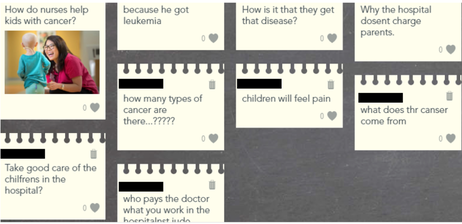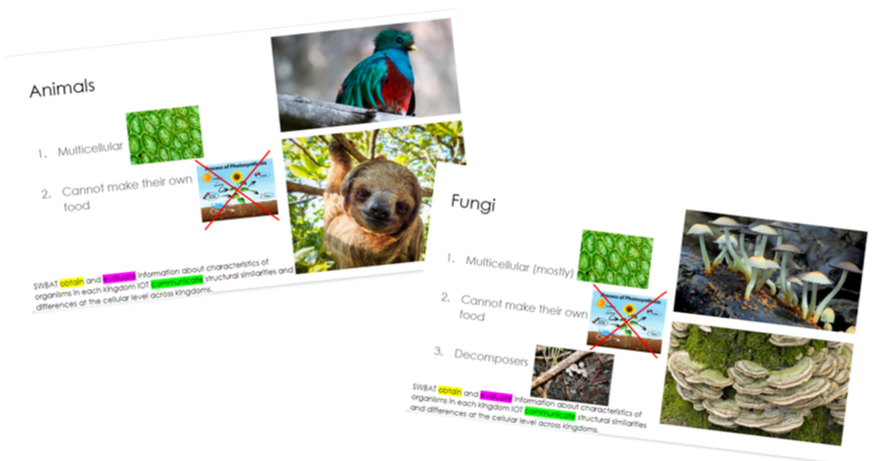|
Justine is a science teacher for ESL high school students in the southeastern United States. She hopes that her students will gain the English proficiency and critical thinking skills that will help them to explore and shape their lives and communities. Here, she describes the challenges and opportunities of teaching science across languages and cultures during a global pandemic. If I am being honest, I never really liked science much when I was in middle and high school. I know that’s probably not the best way to start a post on your friend’s women-in-STEM blog, but it’s true. The only science class I took in college was a meteorology class for non-science majors in which my two groupmates were a humanities major and a music major who played the string bass. We weren’t exactly passionate about cloud formation and cold fronts. Ironically, though, I am now a science teacher. I taught middle school ESL for the past four years, but this year, I started a job at my dream school. It’s an alternative school that serves immigrant and refugee students who are new to the country, are in the early stages of learning English, and have experienced interruptions in their formal schooling. Our goal is to help fill in content-knowledge gaps for our students while simultaneously increasing their English proficiency. I am technically still an ESL teacher, but now I teach language through science content. And…science is growing on me. When I found out that I would be teaching science, I signed up for a slew of professional development opportunities to learn best practices in science education. Through these trainings, I have learned that there has recently been a shift to a new way of teaching science. Instead of focusing merely on content knowledge, new science standards adopted across much of the country push students toward sense making and actually doing science. This “three-dimensional” model of teaching science is based on general content standards, seven cross-cutting concepts, and eight science and engineering practices. Teaching with this model involves students exploring a phenomenon in the world and constructing their own ideas about how or why it works. It is an asset-based approach that builds on students’ pre-existing knowledge and allows their voices and ideas to be heard. Instead of a teacher “depositing” knowledge into her students, “knowledge emerges…through the restless, impatient, continuing, hopeful inquiry human beings pursue in the world, with the world, and with each other” (Friere, 1970, 53). When I was in school, we would often read about and take notes on a scientific concept, and then do a lab (that I could never complete successfully no matter how hard I tried) to demonstrate that the concept was true. I always thought this was so lame, pointless and boring. “Someone smarter than me already told me this is true, so why am I struggling through this lab?” I would wonder irritably. I think, however, that if I had been taught using the new science standards in which students explore before a teacher explains, I might have actually enjoyed science! Although three-dimensional science teaching engages students and aligns more accurately with the work of real scientists, it requires a significant amount of creativity on the part of the teacher. And this is even more true in a COVID-induced virtual school setting with beginning English learners. When I sit down to plan a unit, I start with a phenomenon. When we studied plants, I showed a time-lapse video of a plant growing. When we discussed the different kingdoms of life, I showed a (very relaxing) video of different sea creatures drifting around a coral reef. When we started our unit on cells this week, I showed a video about a little boy with cancer. Next, I have the students make observations and ask questions about the phenomenon. Then, I think of as many ways as I can to have students explore the content before I explain it to them. While the goal is for students to discover as much as they can for themselves, the reality of virtual teaching, the language proficiency level of my students, and simply the limitations of a K-12 science classroom means that I do eventually have to give them some direct instruction. But first, we explore. Sometimes, students will draw a model of what they think causes the phenomenon. I use an online presentation platform that includes special slides where students can draw, answer poll questions, write short answers, watch videos, etc. For example, when we talked about weather, I gave my students a picture of the sun and earth and asked them to draw arrows to show what they thought caused seasons. Other times, they have completed different exploratory activities. When we studied the six kingdoms of life, for instance, I gave them a picture of different living things that they needed to sort into groups based on their initial thinking of how they should be classified. Then, I told them that scientists often classify living things based on their cells and showed them pictures of several prokaryotic and eukaryotic cells to classify. After we discussed the accepted method of classifying cells and some basic characteristics of the six kingdoms, I gave them example organisms from each kingdom along with pictures of their cells. Students had to “be the scientist” and determine the kind of cells each kingdom has. As an ESL teacher, though, I am never just teaching the science content. I constantly weave language learning throughout my lessons. I show a lot of pictures. A LOT of pictures. I explicitly teach vocabulary, and not just content-specific vocabulary, but also what we call Tier 2 vocabulary—words like “categories,” “differences,” and “function” that are academic but not content-specific. I encourage students to use their first language to support their English language development by allowing them to use translation technology and to explain things to each other in their first language. I give them sentence stems and word banks to support their writing. I ask them to explain their models, and if they can’t, I point to a specific part of their model and ask, “what is this?” and if they don’t know, I say, “is it the sun—yes or no?” until I finally get to something that they can do. Because that is the thing—my students, though struggling, CAN DO a lot. Through no fault of their own, they have so many strikes against them. Fleeing violence and poverty in their homelands, they have arrived in a country shouting “build the wall” and “send her back.” They are navigating poverty and racism and an immigration system that is stacked against them and their families, all while struggling to learn the language that could help them advocate for themselves. Some of them are young mothers of young babies. Some of them work the night shift until 6am and have to be in my homeroom at 8am. Honestly, the products of photosynthesis are likely the least of their worries right now.
Yet, they show up to class. They try to puzzle out what this random white chick is babbling on to them about so emphatically in English. They draw their models and they classify their cells and they read and answer questions about what they read. They planted the sunflower seeds that I mailed to their houses. They learn. They do science. Because, as I have been telling people from the moment I started teaching ESL, my students are the most incredible, resilient people that I know. They have dignity and they are worthy of and capable of thinking critically about how the world around them works. And maybe, they will end up liking science more than me. For more information about the new science standards (the Next Generation Science Standards), please visit https://ngss.nsta.org/. Friere, P. (1996). Pedagogy of the oppressed (3rd ed.). The Continuum Publishing Company.
0 Comments
Your comment will be posted after it is approved.
Leave a Reply. |
Archives
February 2021
Categories |


 RSS Feed
RSS Feed
